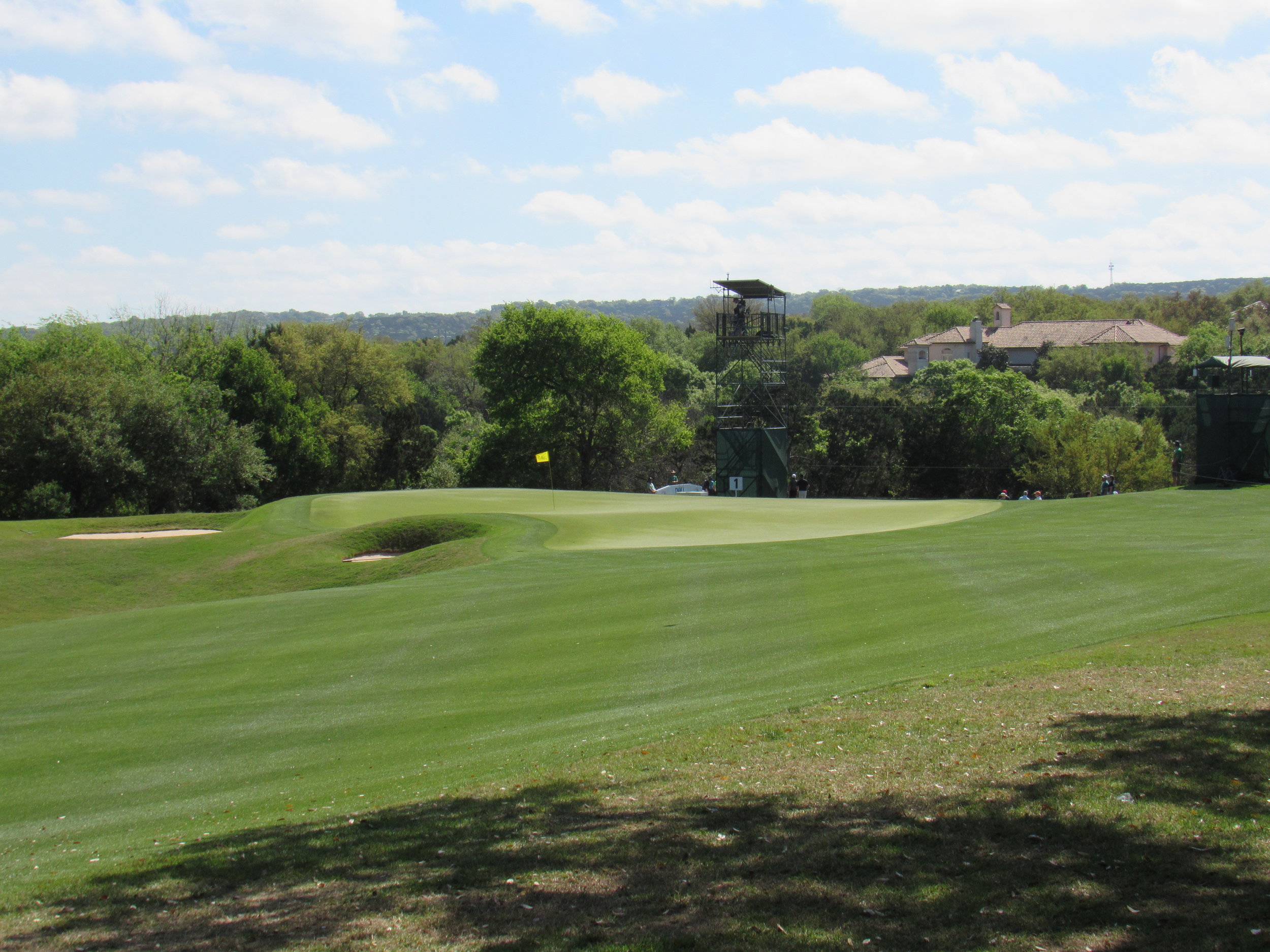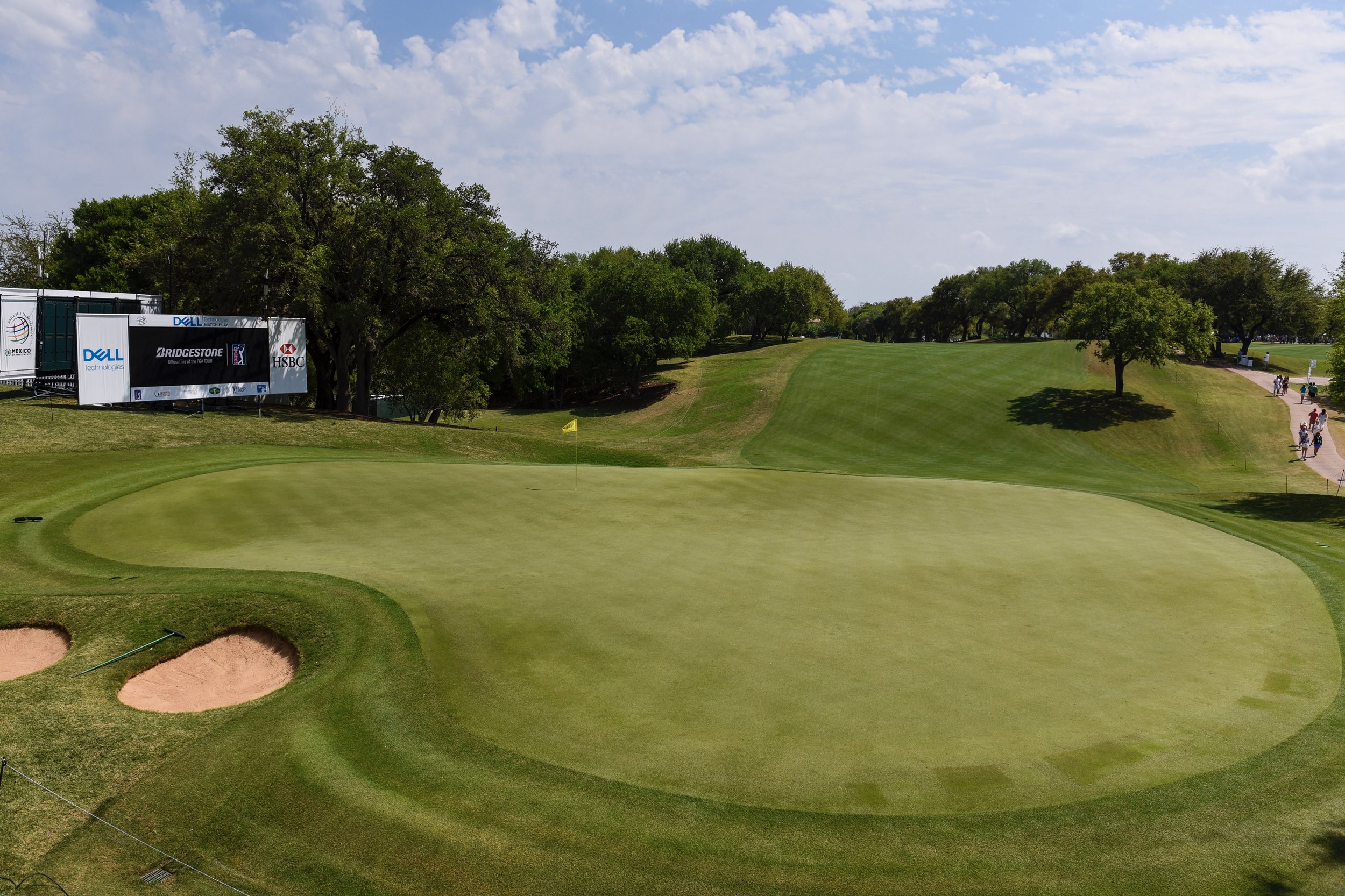“That course is so great for match play.”
You hear this expression thrown around by golfers, but rarely does the conversation touch on what the phrase actually means. I had the opportunity to cover the 2017 WGC-Dell Technologies Match Play and saw what makes Pete Dye’s Austin Country Club such a great match-play venue.
Variety
Off the tee, Austin Country Club doesn’t favor a specific ball flight. Its 14 tee shots are a dead split, with seven favoring a right-to-left ball flight and seven a left-to-right shape. Likewise, there is an even split in approaching the greens, with nine preferring right-to-left shots and nine left-to-right shots.
The holes also have considerable variety in distance. The par 3s all require different shots with different clubs, and similarly, the par 4s and 5s are unique, with a mix of short, mid-length, and longer holes. Also, the course is routed so that holes rarely play in the same direction, which becomes particularly important when the wind kicks up.

Austin Country Club's routing, which constantly changes direction (Google Earth)
The variety of Austin Country Club from tee to the green allows for many different styles of player to succeed. Look at the array of players who advanced to the knockout round of 16: short hitters like Zach Johnson, Kevin Na, and Søren Kjeldsen were mixed in among bombers like Bubba Watson, Brooks Koepka, and finalists Jon Rahm and Dustin Johnson. That’s not an accident. It’s a reflection of a well-designed golf course.
The greens
An aspect of Austin Country Club that gets dulled by television is the undulating green complexes. The small targets possess numerous humps, bumps, and shelves, giving a clear advantage to stellar approach shots that find the correct position on the green, and punishing those that miss.

The first green at Austin Country Club. Photo: Andy Johnson
True risk and reward
The component of Austin Country Club’s design that I find most fascinating is how perplexing it can be to determine the “correct strategy” on many holes. The match-play format diminishes the consequences of big numbers and allows players to attack the hazard-strewn layout more aggressively. The numerous short par 4s (5, 10, 13, 18) beg players to pull driver and potentially reap the reward of reaching the green or leaving themselves with a short pitch. But these plays aren’t always wise because the holes are well guarded with penalty hazards.
There are also many subtle and unique challenges that confront players, even when they do pull off the aggressive play. Take the 18th, a hole that produces huge variety in strategy and play. This short par 4 measures 360 yards and features a steep valley in the fairway that starts about 275 yards from the tee and bottoms out at about 300 yards before running back uphill to the undulating green about 320 yards from the tee. The fairway and valley slope from left to right and funnel balls to a grove of trees on the right side.
The hole presents two distinct strategies: lay back with a long iron at the top of the hill and leave yourself a full wedge into the green, or take a shot at the green with driver.

The hill on the 18th hole at Austin Country Club starts just after the fairway bunker (Google Earth)

A look at the big fairway slope from behind the tough 18th green. Photo: Andy Johnson
The grove of trees and two bunkers on the right side provide an obvious hazard for the aggressive play. But the more subtle challenge is the slope of the ground, which bedevils players whose shots come up short and right of the green, leaving them with a blind 20- to 40-yard pitch shot from a steep upslope to a severely contoured green. This is a shot that players rarely see or practice, and it’s one that consistently leads to lackluster attempts and players walking away with disappointing pars.
This year, just one player, Zach Johnson, hit the green with his tee shot—and he did it on Thursday, when the hole was playing significantly downwind. If you exclude Thursday’s round, the split in strategy on the 18th hole was nearly even: 21 players laid up and 23 went for it. In these cases, laying up led to 52% of players halving the hole, 24% winning the hole, and 24% losing the hole. Meanwhile, going for it yielded 61% halves, 17% wins, and 17% losses.
Surprisingly, the numbers bore out that laying back gave players a better chance to win the hole, likely because of the subtle challenge of that awkward pitch shot from the upslope. The 18th is just one example where playing the aggressive shot isn’t necessarily the right play at Austin CC.


 by
by 
